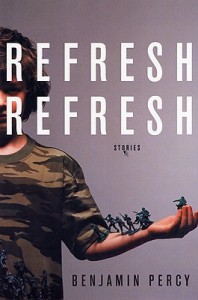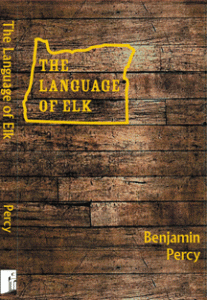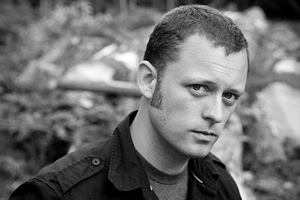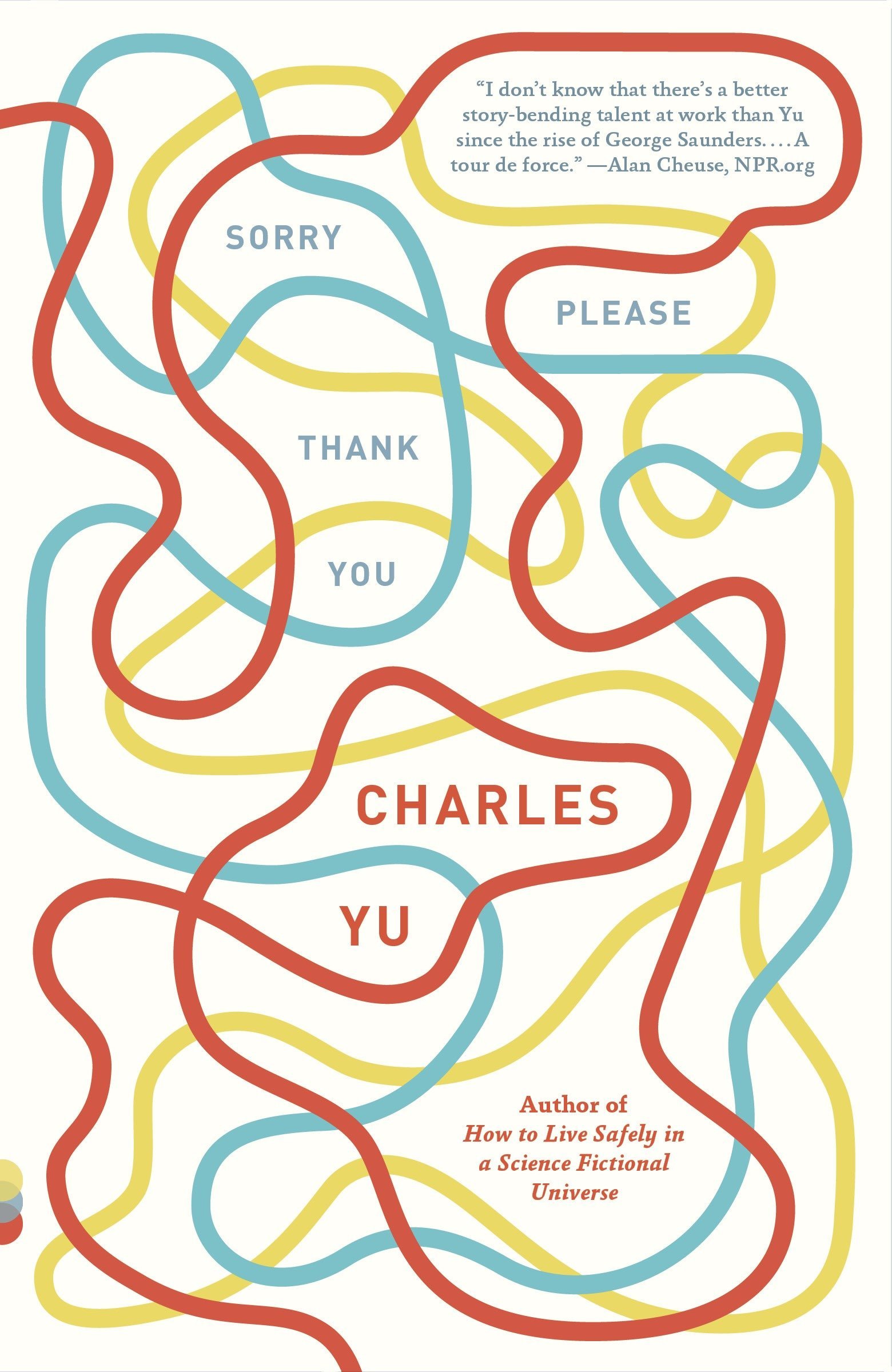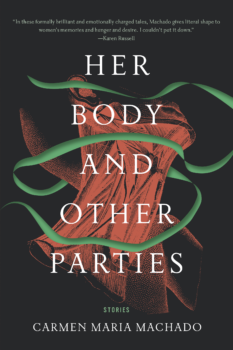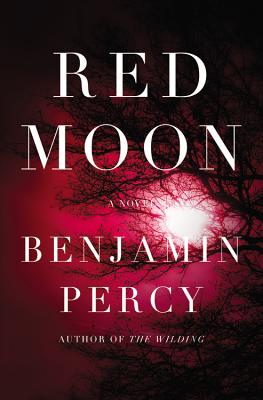 Benjamin Percy’s fourth book and second novel, Red Moon (Grand Central), takes everything enjoyable about Percy’s fiction and cranks up the dials. It’s bigger, bolder, harrier, and hungrier than The Wilding (Graywolf, 2010), spreading globally where the first novel kept to Oregon; enlisting an entire cast—from president to farmer to terrorist to research scientist—where the first centered on three main characters; and setting loose a whole pack—or race, or plague, depending on how you come down on the issue—where the first featured only one very large bear and one sweaty war veteran in a bear suit. Readers of Percy’s past work will recognize his subjects, themes, and images as they make their cameos: there’s the lone desperado cruising across a barren land on his motorbike, the woman who adopts a strict exercise routine to transcend her problems, the cave paintings, even the blood leaking from freezers. But most of all there’s the sense that technology and society have gone too far in repressing humanity’s more primal side, and that our darker nature will soon attempt to claw its way out. As one of the story’s villains, a tall, bald, and vengeful government agent, puts it:
Benjamin Percy’s fourth book and second novel, Red Moon (Grand Central), takes everything enjoyable about Percy’s fiction and cranks up the dials. It’s bigger, bolder, harrier, and hungrier than The Wilding (Graywolf, 2010), spreading globally where the first novel kept to Oregon; enlisting an entire cast—from president to farmer to terrorist to research scientist—where the first centered on three main characters; and setting loose a whole pack—or race, or plague, depending on how you come down on the issue—where the first featured only one very large bear and one sweaty war veteran in a bear suit. Readers of Percy’s past work will recognize his subjects, themes, and images as they make their cameos: there’s the lone desperado cruising across a barren land on his motorbike, the woman who adopts a strict exercise routine to transcend her problems, the cave paintings, even the blood leaking from freezers. But most of all there’s the sense that technology and society have gone too far in repressing humanity’s more primal side, and that our darker nature will soon attempt to claw its way out. As one of the story’s villains, a tall, bald, and vengeful government agent, puts it:
There’s something about them, volcanoes, that has always appealed to me. I have stood at the smoking rim of Saint Helens and flown a helicopter over Kilauea and stared down into its terrible orange eye. In the end, I didn’t have the head for chemistry and physics, but I took enough classes and read enough books to know that eruption is about force and time.
“Force and time,” he repeats. The reader reads and the reader waits, feeling the time pass and the force build, cringing in anticipation of the impendent explosion, knowing it’s sure to come.
Red Moon is more deftly crafted than The Wilding, too. While the last novel employed clunky but efficient headings announcing who the point-of-view character was for each chapter, Red Moon simply slides along, letting you figure out who you’re following organically, only to break away to another camera-character at suspenseful moments, switching scenes and keeping the pages turning. When we shift from Part One to Part Two and from Part Two to Part Three, it feels like we’re moving to a show’s next season and getting filled in on what happened in the intervening months. It’s enjoyable in the same way binging on an entire TV series in one weekend is enjoyable. A terrorist organization led by a mysterious leader with one evil eggplant-colored eye strikes, a tall bald government agent with a vendetta goes on the hunt, a boy with a predestining half-moon birthmark comes home from the attack, a girl flees the authorities armed only with her will and a cryptic note from her disappeared father, and we’re off to the races. Your best bet is to hunker down under a blanket with some popcorn and read, because you’re not going anywhere until you’re finished.
While it may be the latest in a trend of literary authors wrangling genre’s monsters—Justin Cronin with vampires, Colson Whitehead with zombies, and now Benjamin Percy with werewolves—Red Moon sets itself apart with a hard-driving story and stomach-turning imagery. It’s a rollicking, tightly plotted, hirsute good read that takes the classic werewolf trope and drops it into a modern Homeland-esque political landscape, letting the premise play as it will and fleshing it out with the solid characterization work that we expect of good storytelling.
###
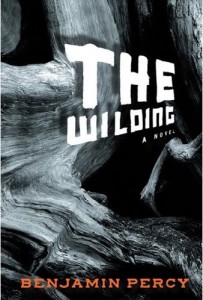 But there, right there in that last paragraph—that’s where the potential problem arises when a writer labeled as literary performs this kind of genre skinnydipping. If an author holds the categories of “Literary” and “Genre-of-Your-Choice” distinct in their minds as they work, they may feel they have to strain to make up the perceived gap, that they have to make Genre be Literary. One of the ways this seems to manifest itself is in an awkward imbalance of characterization to plot, such as in Cronin’s The Passage (Ballantine, 2010), which stepped away from the action for ten to fifty pages at a time to fill you in on each character’s life story. This often felt like taking your characterization medicine to earn your right to the part where a vampire ripped out a throat and guzzled the blood. Another method is to deemphasize the plot, which can feel perfunctory in some capital “G” Genre novels, and focus instead on the quotidian. This seemed to be Whitehead’s method in Zone One (Doubleday, 2011), which sometimes made you feel as if you were wandering and wondering as aimlessly as the undead. Percy doesn’t employ either of these means. We get to know his characters deeply, but never in a slogging, slow-paced manner, and the plot is never surrendered. We’re constantly moving and the terror’s constantly escalating, building from one gruesome spectacle to the next. We always have the feeling that one of our heroines has: “the sense that things are coming together and at the same time spinning out of control.”
But there, right there in that last paragraph—that’s where the potential problem arises when a writer labeled as literary performs this kind of genre skinnydipping. If an author holds the categories of “Literary” and “Genre-of-Your-Choice” distinct in their minds as they work, they may feel they have to strain to make up the perceived gap, that they have to make Genre be Literary. One of the ways this seems to manifest itself is in an awkward imbalance of characterization to plot, such as in Cronin’s The Passage (Ballantine, 2010), which stepped away from the action for ten to fifty pages at a time to fill you in on each character’s life story. This often felt like taking your characterization medicine to earn your right to the part where a vampire ripped out a throat and guzzled the blood. Another method is to deemphasize the plot, which can feel perfunctory in some capital “G” Genre novels, and focus instead on the quotidian. This seemed to be Whitehead’s method in Zone One (Doubleday, 2011), which sometimes made you feel as if you were wandering and wondering as aimlessly as the undead. Percy doesn’t employ either of these means. We get to know his characters deeply, but never in a slogging, slow-paced manner, and the plot is never surrendered. We’re constantly moving and the terror’s constantly escalating, building from one gruesome spectacle to the next. We always have the feeling that one of our heroines has: “the sense that things are coming together and at the same time spinning out of control.”
However, Percy does seem to have conceived of this novel as a blending of two genres, Literary and Horror, and has adopted his own methods for hurdling the resultant gap. First, and primarily, there’s the language—the descriptions on which Percy has built this city. He’s really gunning for it here. Nature has crawled its way into his verbiage. A country lane snakes down a mountain and a foot feathers a brake. Teenagers turtle under the weight of their backpacks and blood geysers from a nose. Even in the quiet moments, Percy is working his language hard, such as the principal’s office that “is eerily dark, lit only by a tall lamp with a heavy shade that tints the room mustard,” or the casually encountered old woman whose “face breaks into a smile with no teeth.” These details lend the whole novel an atmosphere of lurking horror. It’s in moments of violence and gore, though, that Percy’s talent for intense clarity really shines through. This after one werewolf-terrorist attack:
A man staggers by nearly naked, the clothes shredded off him, what remains hanging in blackened and bloody tatters like old bandages. His genitals are missing and blood streams down the inside of his legs. Another man walks by with no nose, another with no teeth, another with no lower jaw, his tongue dangling from a ragged toothy cavity.
Or, later, on the road to a research facility:
He spotlighted a long-haired lycan—whether man or woman, he couldn’t tell—hunched over a girl and feeding on the bowl of her belly.
Passages like these punch the reader in the gut, making them feel the pain of this world, and they accomplish their task via pure, uncut imagery. They also feature particularly functional similes and metaphors.
James Carse, in the chapter of Finite and Infinite Games titled “Nature is the Realm of the Unspeakable,” argues that:
Metaphor is the joining of like to unlike such that one can never become the other. Metaphor requires an irreducibility, an imperturbable indifference of its terms for one another. The falcon can be the “kingdom of daylight’s dauphin” only if the daylight could have no dauphin, could indeed have nothing to do with dauphins.
In other words, metaphors and their more outright cousin the simile can only work if the two things being linked are not actually capable of being the same. Their paradoxical function is not just to glue two things together, but also to hold them apart. A phrase like “the clothes shredded off him, what remains hanging in blackened and bloody tatters like old bandages” gives us a visual reference for what the shredded clothes look like, but also holds the two things, clothes and bandages, apart, reminding us through a kind of reverse psychology that the clothes aren’t actually bandages, that the man is probably mortally wounded. And saying that a lycan, one of the terms for werewolves used in the novel, is “feeding on the bowl of her belly,” alerts us to the horror of this reality: everything is so askew that a belly has become a bowl, which it can never be, should never be.
While this paradoxical effect of similes and metaphors most often works in Percy’s favor, there are moments when this over-attachment to language—particularly similes linking the already dark, dead, or horrific to something else dark, dead, or horrific—works against his interests. For example, a reflection hangs like a ghost, blood steams like a ghost released, bodies are strewn around like a garden of ruined statues, bones poke out of the snow like some dead garden, and a roomful of Geiger counters keeps going off like a clock ticking its way to doomsday. Apocalyptic similes like these risk distraction because bones poking out of the snow and rooms with walls covered with beeping Geiger counters are already ominous images. We don’t need a simile to point out the death and danger crouching nearby. Instead, these similes take us out of the moment. Like the mine later in the book that looks like a factory where nightmares are made, we are, in the narrative’s overindulgence in the language of terror, reminded that this is a constructed nightmare, a sculpted piece of horror, and these things are only like something scary, they aren’t actually something scary, they can’t hurt us. In moments like these, Percy’s attention to language goes a beat too far, drawing our attention away from the story and toward his voice.
Percy’s second means of traversing the conceptual space between Horror and Literary actually contains his first: he is building up recurring motifs, constructing meaning. You can see him doing it in the scene when a character remembers what the pundits on TV said the other night while a werewolf barrels down the airplane aisle; in the references to Stoppard’s Arcadia, Shakespeare’s Othello, and Stevenson’s Jekyll and Hyde; in the myths quoted about trolls and Norse berzerkers; and in the moment when a character makes the Hobbesian observation that violence defines humanity. But you can see it most of all in the allegory. It quickly becomes clear that the werewolves are a stand-in, as Justin Cronin rightly noted in his New York Times review of Red Moon, for nearly all of America’s minorities. The story begins with an attack on an airplane that is linked to the ongoing war in the Lupine Republic (the exiled home of the werewolves in the novel), unmistakably tying the story to 9/11, terrorism, Islam, and America’s response to all as a nation. The lycan’s roots in America become more complicated, however. There was a eugenics program in place and for some time being a lycan was considered a mental illness, a condition to be lobotomized or medicated, a piece of backstory that makes the reader wonder if the werewolves are being linked to homosexuality. There was the Struggle, the time when lycan segregation was mandatory in housing, schools, bathrooms, and restaurants, and later there were the Days of Rage, which mirror the Chicago race riots, tying the werewolves to the plights and struggles of African Americans. In their exile out of the country, they even recall America’s treatment of Native Americans. More so maybe than horror, this is alternative American history.
If metaphor links two things and holds them apart on a small scale, allegory, metaphor’s book-length big brother, writs the effect large. It links the allegorical world and the real world, calling attention to how they are alike, but also holding them apart. Right off the bat in Red Moon we’re set up to fear some werewolves and sympathize with others, as the first two transformations we witness are those of a terrorist and that of a girl who has just had her parents taken from her by the government. This sort of duality is deliberately omnipresent in the novel, with details and events recurring in both the “good guys” sections and “bad guys” sections. A terrorist sees his reflection in a window just before striking, and less than fifteen pages later a good girl sees hers. A government agent brutally tortures a terrorist, and soon after the terrorists chain a woman to a bed and have their way with her. As the girl sees it:
Everything suddenly feels like a double: the two fingers, the two videos, the two names she answers to, the sun and the moon, the infected and the uninfected, the United States and the Republic, the president and his contender, Matthew and Patrick, Reprobus and Miriam. She feels—the world feels—split down the center.
This doubling encourages us to see how the lycan resistance and the U.S. government are alike. The government has committed atrocities on a large scale over a long period of time, and the lycan terrorists have committed hideously short spats of terror. It becomes difficult to sympathize with either one, and in that way it feels like an accurate allegory. Like the story told later in the novel of a village that hired a snake to kill a jackal that was eating its babies, only to have the snake take the jackal’s place, we’re set up to see how the government and the terrorists are equally bad, how either one would, if given the chance, eat our babies. And so we side with those stuck in the middle: the citizens, regardless of their degrees of hairiness. This is the productive side of the allegory: through this fictionalized version of reality, in which the binaries are clearly and directly presented, the reader is forced to recognize just how many wrongs have been committed by both sides.
There are some distinct ways in which this allegory stands apart from our own world, however, some ways in which Percy’s decision to make such clear and explicit analogies between the real world and his novel’s runs the risk of over-simplification. America’s foreign wars of the last few decades are omitted minus the fictional one occurring in the Lupine Republic, condensing the problematic history of America’s actions abroad into one conflict. Religion is barely mentioned except later in the novel when a character visits a post-apocalyptic enclave built of bones, removing deeper clashes of faith and culture from the motivations behind terrorism. The biggest difference, though, is that the werewolves are actually physically different from your standard human. The lycan condition is caused by a prion, a near cousin of mad cow disease that originated from people eating wolf brains, and if it progresses too far it produces a kind of blood-hungry dementia, something that American soldiers in the field refer to as a “rabid dog.” Despite the Lupex pill regimen, there’s still a spike in crimes during full moons that makes people afraid to leave their homes. This is perhaps where the analogy overreaches. Even if you accept the consolidation of U.S. military history and the omission of religion from the list of terrorist motivations, amalgamating multiple minorities’ histories into one origin story for werewolves remains troubling for a couple of reasons. First, it simplifies the past and seems to suggest that minorities’ struggles have all been the same, when in fact they’re widely variegated and individual. Second, and most importantly, no matter the efforts encouraging the reader to empathize with the lycans and to see how they aren’t so different from you and me, you never quite forget that these are half-humans, half-wolves, who, if they were to lose control, would rip the larynx from your screaming frame.
###
It’s entirely possible that I’m overanalyzing and overgeneralizing, trying to make a point about Literary authors dipping into Genre while plucking apart a good author’s most ambitious book yet. Percy has often said that he writes for the heart, not the mind, and so chipping away at Red Moon like this could be missing the point. It’s clear he had a great time wading knee-deep into all this blood and political intrigue, and his enthusiasm is infectious. Besides, the hairy are often the nefarious in Percy’s fiction, from the recurring beasts to the bearded fathers who didn’t go to war in “Refresh, Refresh” to the Deliverance-inspired backwoodsmen in The Wilding, so it’s little surprise that werewolves are Percy’s chosen subject. If I were in one his stories, I’d likely be the villain, too—or at least a good-for-nothing, bearded pseudo-intellectual, stroking my beard and eyeing everything cynically.But while it’s not likely that Percy was setting out to write an Orwellian allegory capable of diagnosing the problem and inspiring the oppressed, and so it’s unfair to hold him to that kind of standard, it’s clear that he had serious literary intent for Red Moon, that he strongly wanted it in some way to be more than just a novel about werewolves. Not acknowledging and responding to that intent as a critic would be disrespectful and dishonest, and Percy deserves praise for bringing so much meaning to the premise of this book. As a reader, my sole criticism is that I wished at times for a toning down of the language by a degree or two, perhaps a little less labor at theme-building, maybe even an approach that set aside the concepts of Genre and Literary completely. Because it’s when Percy leans forward and simply enjoys writing about werewolves, letting the details and beasts howl for themselves, that Red Moon really shines.
Further Links and Resources:
- For more on Benjamin Percy and his work, please visit the author’s website.
- Read Shawn Andrew Mitchell’s 2010 interview with Percy, upon the release of the publication of The Wilding.
- Listen to Percy read “Heart of a Bear” for Orion
- Here are links to Percy’s non-fiction for such publications as Esquire, GQ, Poets & Writers, Oxford American, and elsewhere.

